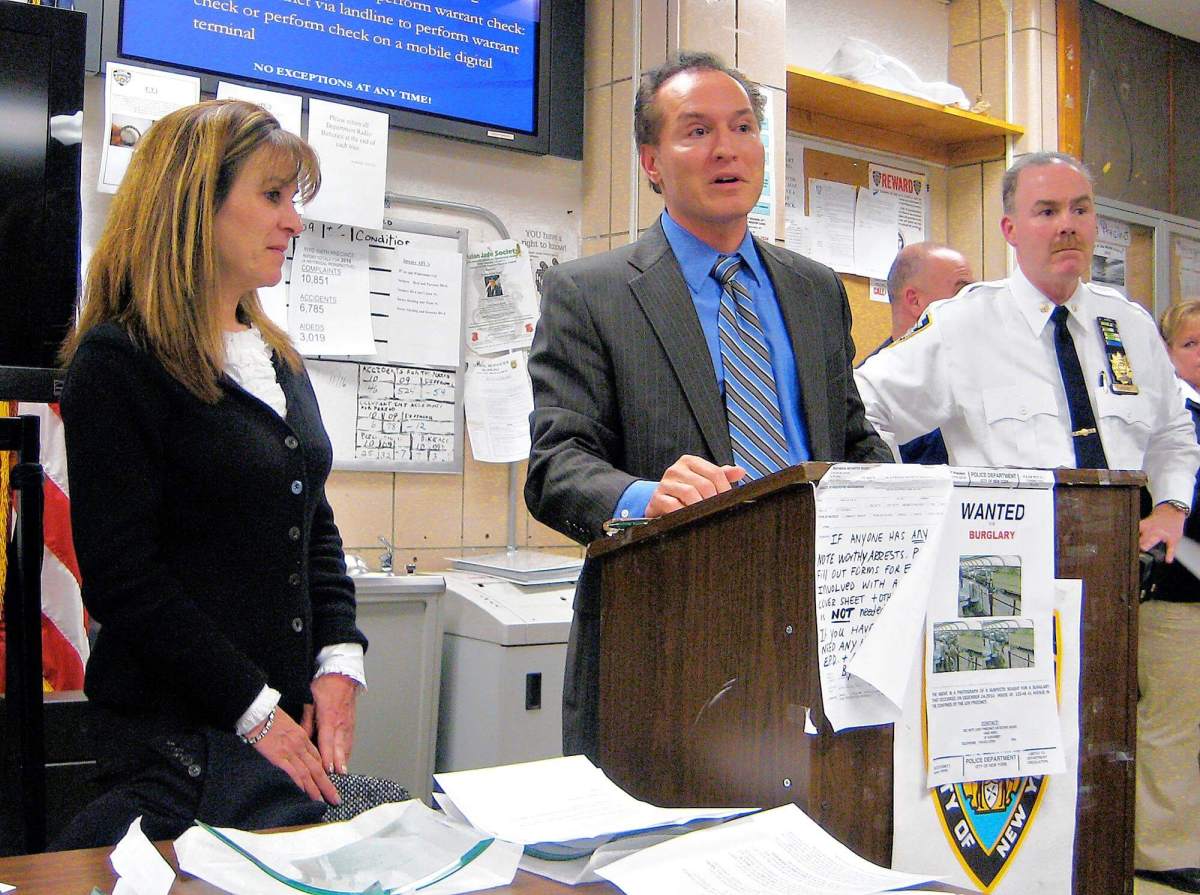By Connor Adams Sheets
City Councilman Peter Vallone Jr. (D-Astoria), chairman of the Council Public Safety Committee, passionately made the case for boosting the city’s law enforcement capabilities and resources at the 109th Precinct Community Council’s meeting last week.
He began the evening of Feb. 9 by painting a stark image of what the future would hold if crime prevention was not made a bigger priority in Albany. He said the city could return to the condition it was in decades ago, when robbers and drug dealers stalked the streets and drivers were constantly worried about returning to their cars to find them on blocks, stripped of their tires and rims.
In fact, these things are already beginning to happen with increasing frequency throughout the borough and the city as a whole, he said, and it is up to city and state lawmakers to address the underlying causes of the crime rate, which is showing signs of edging up after years of sharp decline.
“As many of you know, the huge drops in crime we’re seeing are coming to an end. This year certain kinds of crime are up, and this is the first time we’ve seen that in years,” he said. “We are now about to perhaps lose control of this downward trend in crime.”
He emphasized that crime is down 80 percent citywide from the high periods in the 1990s, but said there needs to be a continued commitment to keeping crime prevention a top priority if the city hopes to ensure that trend does not reverse itself in coming years.
Vallone listed three key reasons why the city may be facing a more crime-ridden future: the weakening of the Rockefeller drug laws in 2009, the reduced ranks of the NYPD since 2000 and the economic downturn.
He said these three factors have combined to create a “perfect storm” that will lead to a more dangerous city if something is not done to address them.
The Rockefeller laws were implemented in 1973 to stem the wave of violent drug-related crime that was seizing the city at that time. Many people were sentenced to harsh 15-year minimum sentences under the program at its outset, giving the laws a bad rap among many civil rights advocates and others. In 2003, the laws were amended to make them fairer to first-time and nonviolent criminals, but criticism of the program still mounted, particularly among Democrats.
In 2009, state legislators and then-Gov. David Paterson voted to remove the mandatory minimums from the laws, a move 109th Precinct Deputy Inspector Brian Maguire said “gutted” the legislation.
As a result of that change, many drug dealers avoid jail time that Vallone said is often warranted.
Since Sept. 11, 2001, Vallone said the New York Police Department force has fallen by 6,000 officers as a result of an under-appreciation of the necessity of staying on top of crime, Vallone said.
And the weakness in the economy has forced some people who may have already been on the edge into a position where they feel they have no choice but to commit crimes, he said.
“There’s not going to be anymore police. The best we can hope to do is stop [Albany] from decimating our ranks any further,” Vallone said. “Queens is going to get hurt worse because we have larger districts. Having one less police car on the streets could mean they’ll be a mile away vs. three blocks away in Manhattan.”
Reach reporter Connor Adams Sheets by e-mail at csheets@cnglocal.com or by phone at 718-260-4538.

































